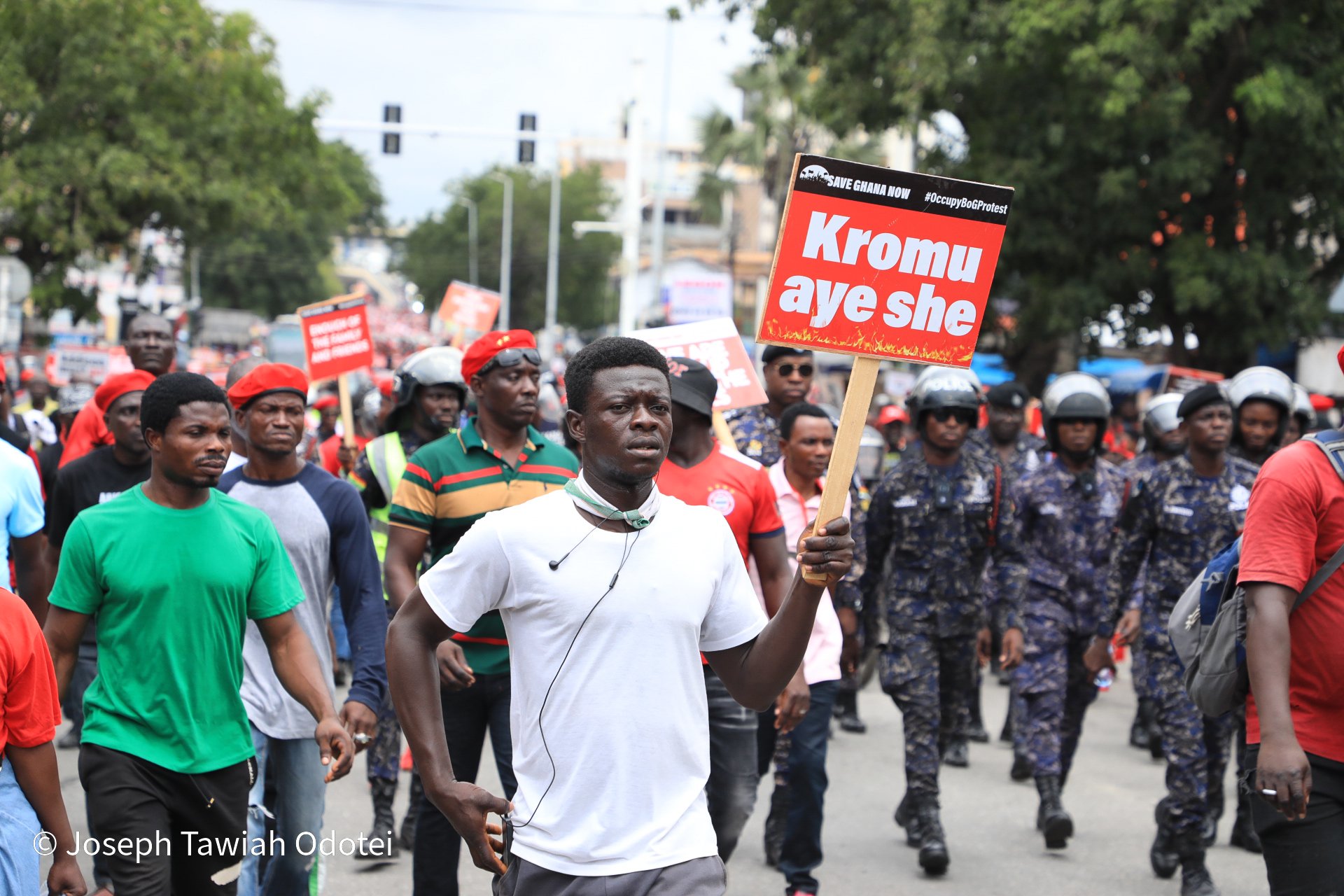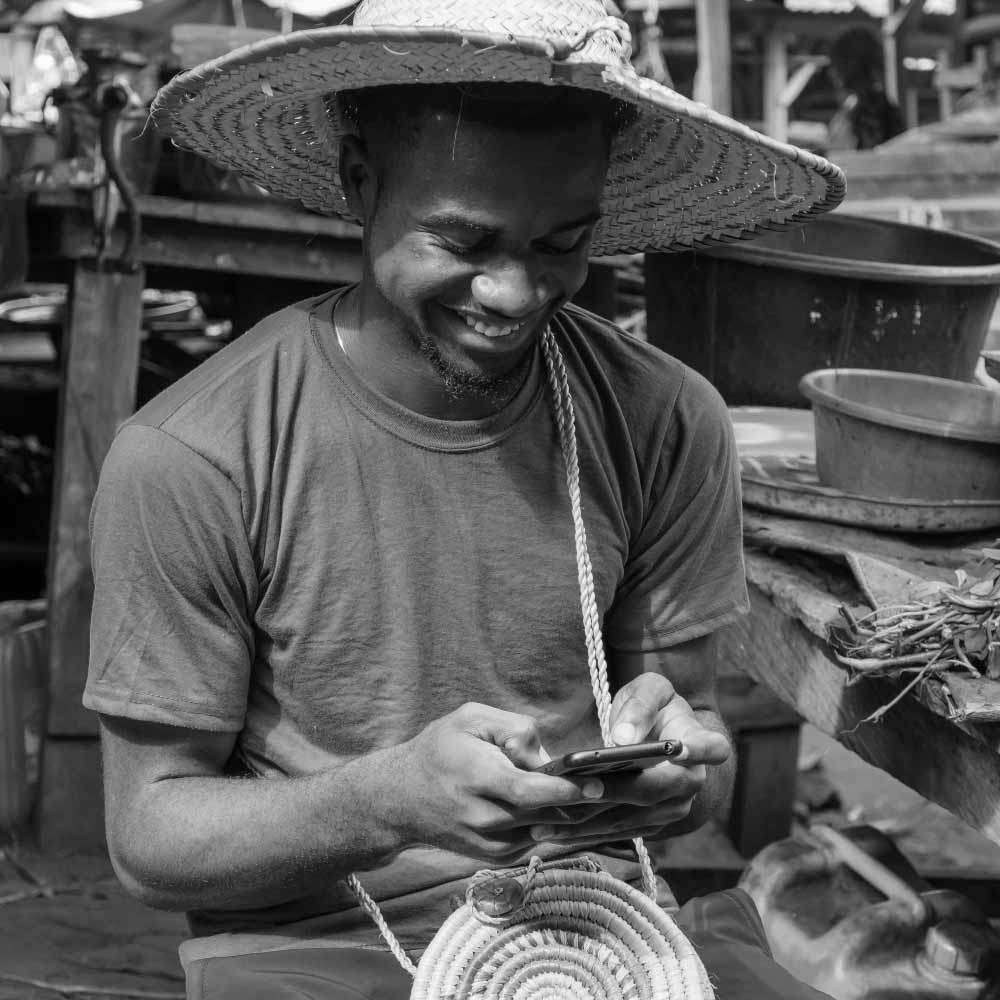- by Jessel
- October 10, 2023
Click the link below to join Our WhatsApp group for daily brief on current trends in the country.
Join Here!
Loading

Hundreds of Ghanaians thronged some principal streets of Accra yesterday to protest against the high cost of living, the state of Ghana’s economy, and ultimately the Bank of Ghana (BOG) for incurring over GHC 60 billion in loss.
They accused the BOG of the mismanagement of the country's central bank and also called for the suspension of the construction of the central bank's new head office, which is budgeted at USD 250 million.
Clad in red and black, they bore placards such as “NPP where are the men, save Ghana now!!, Addison must go!, and Addison the printer” to convey their grievances and was free of any form of violence on both side of the protestors and the Ghana Police Service.
This protest comes after several weeks of legal battle of injunctions between the Minority in Parliament and the Police regarding the planned demonstration against the Bank of Ghana.
Earlier this year, on August 23, the Minority in Parliament, led by Ato Forson, announced their intention to stage a demonstration against the Bank of Ghana.
Additionally, the protesters are demanding the resignation of the Governor of the Central Bank, Ernest Addison, along with his two deputies.
However, Ghanaians took to social media to share their opinions about the demonstration.
Over a span of two hours, a total of 687 comments were meticulously recorded and examined from the morning shows of three prominent media houses including Metro TV, UTV, and Peace FM.
The analysis revealed a diverse range of sentiments among social media users, with several noteworthy observations. Among the commenters, 21 individuals representing 3%, expressed their concerns about the #OccupyBOG demonstration whilst only 20 individuals representing 3% were against the protest.
Despite the significant viewership and engagement on the face page, the vast majority of comments, 646 representing 94% did not directly relate to the central discussion. Instead, these comments predominantly consisted of pleasantries extended to show hosts and guests, advertisements promoting various products and services, and discussions unrelated to the topics being discussed.
A user with the name, Nana Amponsah was of the opinion that the demonstration was needless as it won’t yield the intended results.
“Braa, this demonstration cannot change nothing in Ghana, Tewaa NDC Party,” he said.
Key Observations
· While there was significant viewership on the Facebook live of the morning show, the number of comments directly related to the topics being discussed remained relatively low. This suggests that a significant portion of the audience may have been passive observers rather than active commenters. It also suggests that a significant number of the commenters were unconcerned about the issues under discussion.
· The bulk of comments across various platforms encompass greetings, product and service advertisements, and subjects unrelated to the topics under discussion. This diversity in comment content indicates a wide range of interests and engagement styles among social media users.
Conclusion
The analysis provided indicates a clear distinction among social media users in Ghana. On one hand, there is a group of users who seem less concerned with current issues and instead focus on promoting their businesses and exchanging greetings on social media platforms. On the other hand, there is a substantial number of individuals who actively engage in discussions addressing the pressing problems affecting the country.
In essence, some Ghanaian social media users prioritize personal matters and commercial endeavors, while others are committed to discussing and raising awareness about the critical issues facing the country.
In light of the divergence in user behavior observed, a cross-section of users were in support of the demonstration and would want the government to be accountable for their actions.

Click the link below to join Our WhatsApp group for daily brief on current trends in the country.
Join Here!
0 Comments: